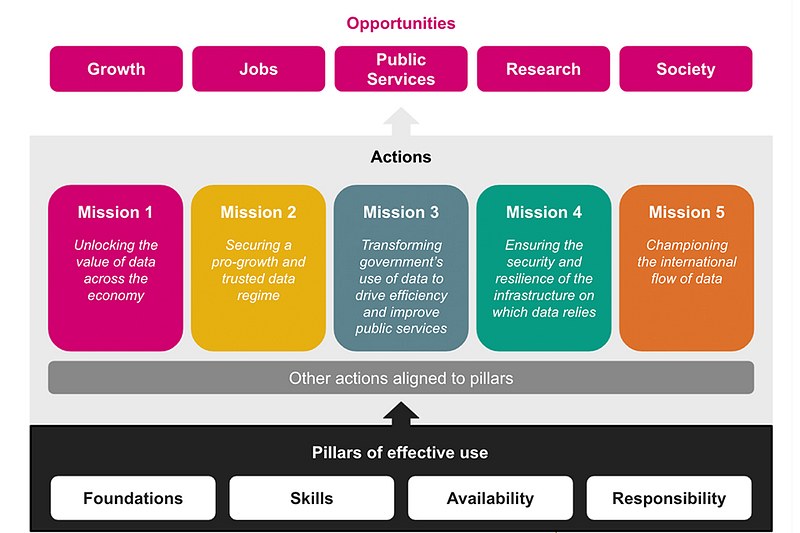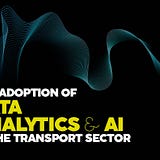Strategic Planning Part 2.1: Integrated Data — Transport
Very tardy part 2 (despite my best efforts). Its been a very busy few weeks second guessing and preparing what the next few months will…


Very tardy part 2 (despite my best efforts). Its been a very busy few weeks second guessing and preparing what the next few months will look like….
Following on from part 1 where I talked about the opportunity of large integrated data sets in how we might accelerate strategic planning when it comes in to force and really beef up the opportunity that larger scale land use and economic planning can bring.
I want to pen a few thoughts on the types of data which will be critical to getting this right. I was intending to do them all in one follow up but I got carried away so we are going to look at one area in each part so transport is up first.
Of course this is not exhaustive and feel free to comment and add thoughts because I would love to crowd source a really comprehensive approach to this. Let’s crack on…
The integration of transport data will be a fundamental for creating spatial development strategies that are sustainable and efficient, especially with a powerful decarbonisation agenda and no real current understanding of how we balance the growth we require with a 2050 zero carbon road map. There have been huge strides made in transport data (arguably more than many other areas of built environment. Public transport and highways infrastructure were digitised earlier than many other sectors, in large part due to their need to monitor and optimise their operation, and the relative ease of adding connected, data generating devices to assets and infrastructure.
Existing Innovation
However much of it is not open and the relationship of data between DfT and its ALBs, Transport Authorities and the National Infrastructure Commission is something that needs real focus from a data sharing perspective if we are to develop a more integrated approach to land use planning.
There is also a lot of positive innovation that has already started and that we should be building on: Transport for Greater Manchester’s Bee Network was developing and open data portal until recently and Transport for London’s (TfL) open data platform is one of the best examples of innovation,at a national level DfTs Connectivity Tool (see previous blog for more detail) is likely to move to a live product in the new year with many opportunities to develop it for wider strategic planning use cases. The new National Data Library proposed in this weeks budget could also provide a vehicle for helping fast track progress in this area.
Use case opportunities
A significant benefit of open data is the ability to model multiple different scenarios for urban development and bring together the richness of retrospective use, new land use proposals, development sequencing and other critical dependencies to help develop more accurate predictive analysis and modelling.
Transport data is already used in local planning to assess the impact of new housing developments on traffic congestion and public transportation systems already but opening this up on a strategic regional or sub regional footprint provides much more opportunity for planning long term strategic infrastructure, investment and economic connectivity and ensure better development sequencing across multiple land use actors.
Better insight can also enable significant attention to be given to the promotion of the use of active travel and sustainable transportation options such as cycling, walking, and public transit using behavioural data and nudge theory.
https://cities-today.com/data-tool-launched-to-support-uk-active-travel-policies/

Moreover, integrating transport data with other datasets, such as housing and employment data, allows for a more nuanced understanding of the relationship between where people live, where they work, and how they travel. This can inform much more quickly and effectively decisions about the best options for location of new housing developments, how to design transportation networks, and what types of infrastructure investments are needed to support future growth, freeing up planning officers to undertake better modelling more quickly.
Developing on open data
In London, Transport for London’s (TfL) open data platform has been instrumental in enabling third-party developers to create applications that help residents and visitors navigate the city’s transportation system. This data has been used to develop apps that provide real-time updates on bus and train schedules, suggest the most efficient routes for cycling, and even predict future congestion levels based on current traffic patterns.
Such applications not only enhance the user experience but can also provide valuable insights to planners about how transportation networks are being used, which can inform future infrastructure investments and sequencing of development. Access to open data can accelerate innovation in the market especially in key areas such as active transport, design of sustainable urban transport systems, and reduction of congestion and pollution. Predictive analytics which rely on accurate data and are improved with larger and more nuanced data sets can then be used to model future scenarios more quickly and more accurately, helping planners to anticipate and mitigate potential transport-related issues in new developments much more effectively.

Transport data does not stop at current local planning authority boundaries and getting good data standards and sharing practices across organisational and sectoral boundaries will bring resilience in terms of organisational or policy change and political volatility. Improving the understanding of patterns of demand, opportunities for intervention and where / how major infrastructure investment is best targeted and how it is sequenced (no more spiralling costs cough.. cough… HS2) is something we should be all working towards and getting the foundations in place though open integrated data could be as close to a panacea as we can get.
Next up Energy Planning Data… Exciting stuff, maybe a bit more on how it relates to the new budget too (with a little more time to digest).
